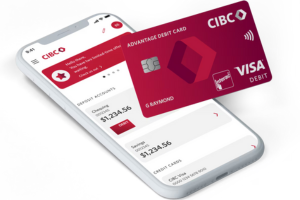DTC: The Rise and Fall of Direct-to-Consumer Brands
Anúncios
In the dynamic world of retail, the emergence of direct-to-consumer (DTC) brands initially disrupted traditional business models, offering consumers innovative products and personalized experiences. However, recent market trends have cast a shadow over these once-promising ventures, signaling a challenging road ahead.

[su_button url=”https://www.nab.com.au/personal/credit-cards/qantas-rewards/nab-qantas-rewards-premium-card” style=”flat” background=”#184ca1″ size=”15″ icon=”icon: credit-card-alt”]APPLY FOR NAB QANTAS REWARDS PREMIUM CARD[/su_button]
Market Volatility and Investor Sentiment
Over the past 15 months, the US stock market has experienced significant volatility, characterized by periods of rapid growth followed by sudden declines. While indices like the S&P 500 soared to new heights, not all sectors reaped the benefits. Direct-to-consumer brands, celebrated for their innovation and disruption of established retail paradigms, have encountered substantial setbacks.
Investor sentiment, shaped by economic uncertainty and forecasts of a looming recession, has shifted towards risk aversion. This change in perspective has led investors to prioritize stability and profitability over the rapid expansion pursued by many DTC brands.
Financial Struggles and Profitability Challenges of DTC
Despite their popularity among consumers, many DTC brands have grappled with persistent financial challenges, struggling to achieve profitability. Companies like Allbirds, Warby Parker, and Rent the Runway have reported significant losses, reflecting the inherent difficulties of scaling operations while maintaining sustainable business models.
One of the fundamental issues plaguing DTC brands is their reliance on venture capital funding, which prioritizes growth over profitability. While aggressive marketing and rapid expansion may drive short-term revenue growth, they often fail to translate into sustainable profitability. As market dynamics evolve, investors are increasingly scrutinizing companies’ financial health and long-term viability, prompting a reevaluation of the DTC business model.
Evolution of Venture Capital and Growth Strategies
The meteoric rise of DTC brands in the mid-2010s coincided with a surge in venture capital investment, fueling the rapid expansion of startups across various industries. Flush with funding, companies pursued aggressive growth strategies, leveraging digital marketing and e-commerce platforms to reach consumers directly. However, as market conditions evolved, the shortcomings of this approach became apparent.
Venture capital investors, once enamored with the promise of disruptive innovation, began to demand tangible results and sustainable growth. The shift towards profitability-focused investments exposed the vulnerabilities of DTC brands built on unsustainable business models. As a result, many companies found themselves ill-prepared to weather economic downturns or adapt to changing consumer preferences.

The Path Forward: DTC Adaptation and Resilience
In response to mounting challenges, DTC brands are reassessing their strategies and seeking new avenues for growth and profitability. For some companies, this may involve pivoting towards a more diversified product offering, expanding into new markets, or reimagining their marketing and distribution channels.
Additionally, the trend towards private ownership offers a lifeline for struggling DTC brands, providing an opportunity to restructure and refocus away from the pressures of public markets. By going private, companies can recalibrate their operations, streamline costs, and prioritize long-term sustainability over short-term growth metrics.
Ultimately, the success of DTC brands hinges on their ability to adapt to evolving market dynamics, cultivate resilient business models, and deliver value to consumers in an increasingly competitive landscape. As the retail industry continues to evolve, the fate of DTC brands will be determined by their capacity for innovation, agility, and strategic foresight.
See also: Retirement Savings Challenges for American Workers
[su_button url=”https://www.nab.com.au/personal/credit-cards/qantas-rewards/nab-qantas-rewards-premium-card” style=”flat” background=”#184ca1″ size=”15″ icon=”icon: credit-card-alt”]APPLY FOR NAB QANTAS REWARDS PREMIUM CARD[/su_button]






